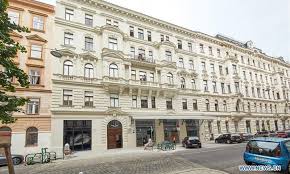
Vienna’s most famous address. It was in this apartment that the secret of dreams was revealed to Dr Sigmund Freud on July 24, 1895. It was in this house that Freud developed and startled the world with his revolutionary theories of the id, the ego, and the superego; the concepts of life and death instincts; the theory of psychosexual development; and the interpretation of dreams. It was at Berggasse 19 that psychoanalysis was born and Freud was tagged the Father of Psychoanalysis.
It was in this house that Freud lived for 47 years before being compelled to flee the country at the beginning of the Nazi regime. He took his possessions with him into exile in London but the house in Berggasse 19 stood steady holding within its walls countless stories of the bearded psychoanalyst and his patients who lay on a couch to unveil their angst and dreams.
The old Sigmund Freud Museum has now reopened at its original location in a contemporary museum format. The original rooms have been brought back to life – the entrance wardrobe of Freud’s private apartment is dedicated to his early years and the beginning of his self-analysis and autobiographical studies.
After a quick look at Freud’s former sleeping room and the gentleman’s salon we have a chance to enter what was originally the family kitchen. After Freud left Vienna, the Nazis repurposed the space as collection apartments where Jews were imprisoned before being deported to concentration camps.
The following room is the famous waiting room where Freud’s patients cooled their heels for the next session; it also served as the meeting point of the so-called Psychological Wednesday Society.
The rooms in the intermediate floor, where Freud had his first practice now serve as exhibition space for contemporary art, including Liège, an artwork by Franz West, an internationally acclaimed Austrian artist.
The treatment room in Freud’s second practice where the patients lay on the famous couch narrating their anxieties and dreams with Freud sitting behind them by the wall where hung a carpet now has a new look. The couch is no longer there, as Freud took it with him to London, neither is the carpet. The gaping holes of the nails with which Freud pinned the carpet behind his couch are the sole reminder of the absent carpet.
The most intriguing aspect of Freud’s quarters is the discrete door through which his patients could walk out unnoticed.
Beyond books and memorabilia, the museum also presents the development, contemporary relevance and global spread of psychoanalysis, which was invented by Freud. The library of psychoanalysis at the Museum – Europe’s largest study library devoted to the subject with around 40,000 media – is a key part of the redesign and refurbishment project.
New and optimised facilities help create a significantly enhanced museum experience: a lift opens up access to all of the floors in the building, the shop and ticket desk on the ground floor are designed to cope with the thousands of visitors expected each year.
Conceptual art: The museum also incorporates a collection of conceptual art, which includes works by Franz West, Joseph Kosuth and Jenny Holzer. “For me as an artist it was very exciting to move away from a white cube presentation concept, so we integrated important pieces of our concept art collection into these rooms of historical significance, and it became quickly noticeable that work started corresponding with the former meaning of the space,” says Monika Pessler, Director, Sigmund Freud Museum.



